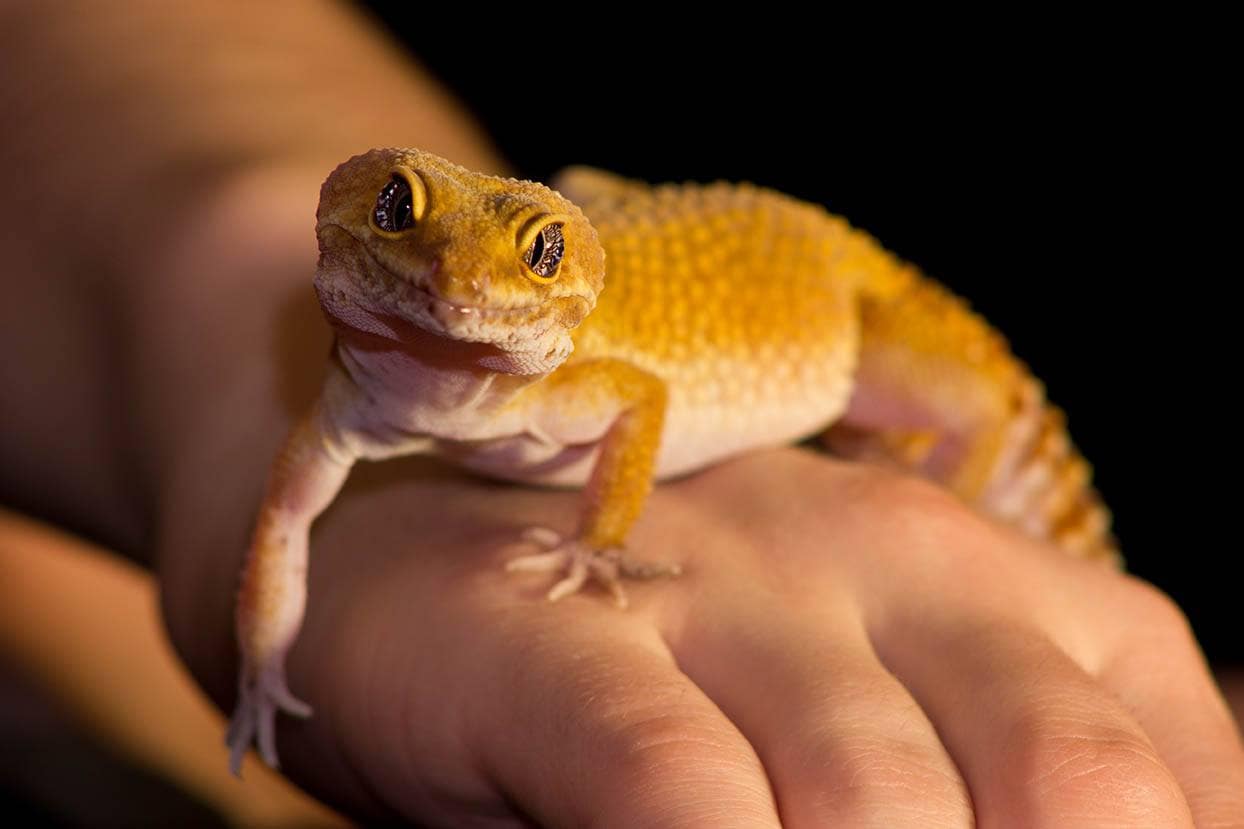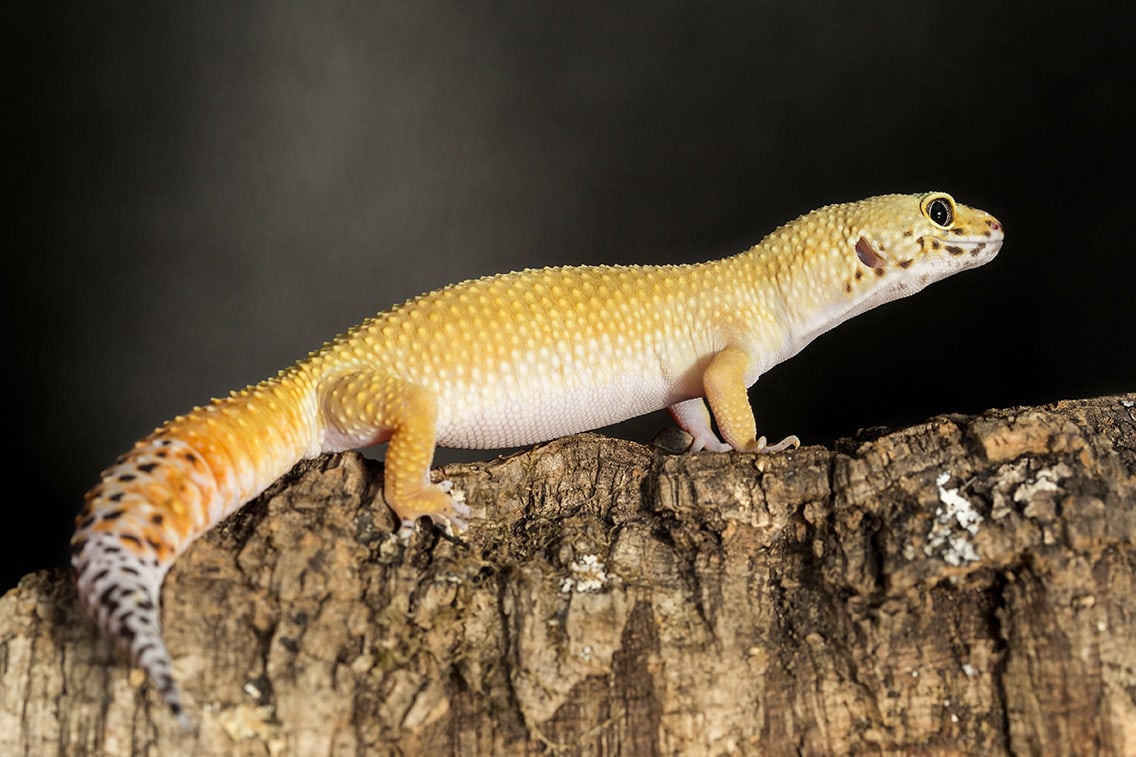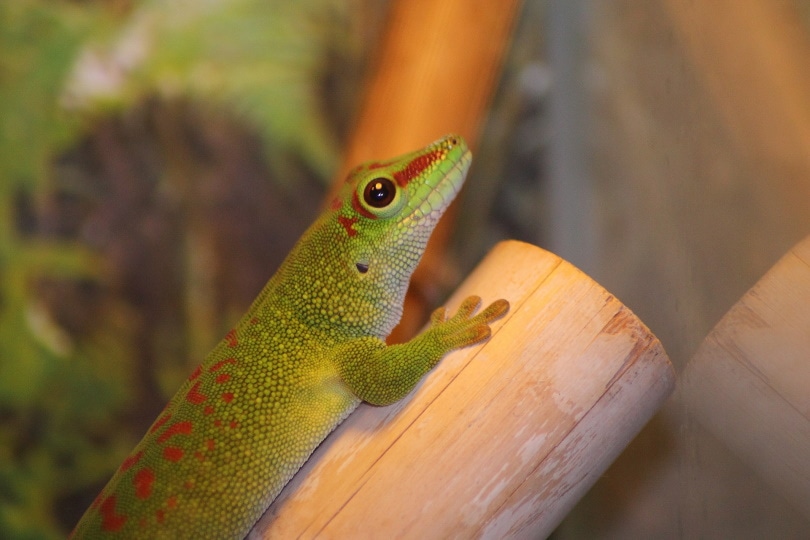
Crested Geckos are ideal reptiles for beginners, as they are relatively simple and easy to look after. That said, these reptiles can live for up to 20 years, so they are a large responsibility that should not be taken lightly. With this long lifespan, you’ll want to make sure they have the best enclosure possible.
Housing a Crested Gecko is a fairly simple, low-cost project, and the minimum requirements for them to live a happy and healthy life are easy to meet. In the wild, Crested Geckos live primarily in small shrubs and trees, so the more you can mimic their natural environment in this way, the better. Crested Geckos are semi-arboreal animals (animals that live terrestrial lives and spend a significant amount of time in trees) that love to climb and jump, and as such, you’ll need a terrarium or cage that is higher than it is long.
In this article, we’ll go over the steps involved in choosing the right terrarium size for Crested Geckos, as well as other tips to make sure they live long and healthy lives!
Before you start
The main consideration of housing a Crested Gecko correctly is that these animals love to climb, and as such, they are far better suited to having a vertical enclosure. A standard horizontal enclosure that is commonly used for reptiles simply won’t do for Geckos, so this is the most important aspect of their housing. Crested Geckos do not cost much to purchase, and their tank is where you’ll be spending most of your money. A suitable enclosure, loaded with a substrate and plenty of plants and branches to climb on, can easily set you back several hundred dollars, so you should consider this carefully in your budget.
While this may seem like an expensive initial outlay, the subsequent costs of looking after a Crested Gecko are fairly inexpensive, so once you have a suitable enclosure, you are good to go!
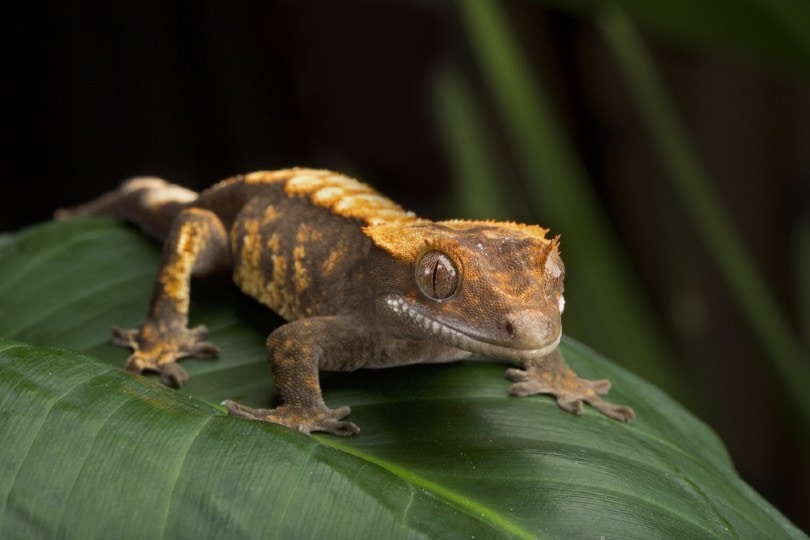
Types Of Enclosures
The first step in choosing the right size habitat for your Gecko is deciding on the type you want. There are several types of enclosures commonly used for keeping reptiles including:
Vivariums are glass enclosures commonly used for housing reptiles and amphibians and are the ideal choice for Crested Geckos. Aquariums are also glass but are typically used to house fish, although they do have use in housing reptiles too. For Crested Geckos, however, the horizontal layout of aquariums makes them less than ideal.
Lastly, mesh cages can also be used for Crested Geckos. They are typically a plastic or aluminum frame with a nylon or fiberglass mesh screen and provide great ventilation for misting, although they are difficult to keep temperature controlled.
Minimum Enclosure Requirements
No matter the type of enclosure that you decide to go with, you’ll need a minimum size of around 10 gallons, or 12x12x18 inches, for a single gecko. For a pair or trio, 18x18x24 inches is the minimum recommended size. Remember that you’ll also want to include shrubs and branches for climbing, so bigger is better. Both glass and mesh enclosures are great, but it’s far more difficult to maintain constant humidity — an essential component to the health of your gecko — in a screened enclosure. Additionally, maintaining humidity levels in enclosures also gets more difficult the larger they are.
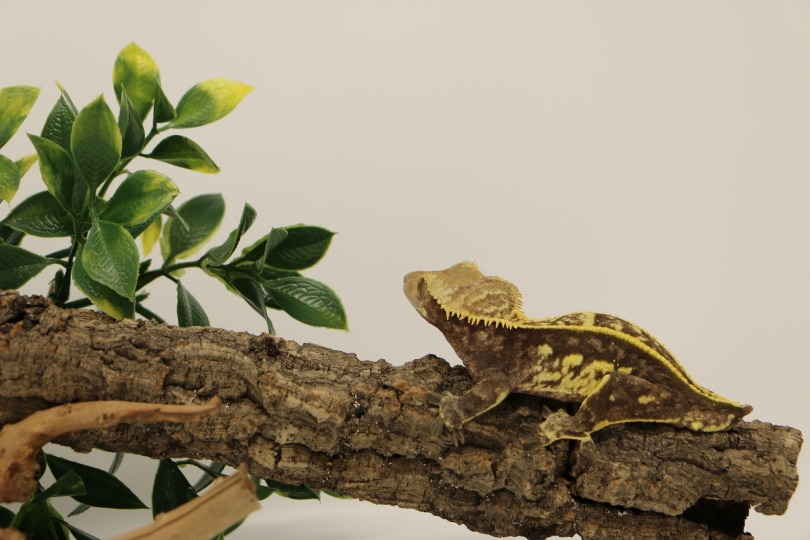
- Related Read: What Do Crested Geckos Eat in the Wild & as Pets?
Humidity & Temperature Control
While Crested Geckos are hardy little reptiles, they still need strict humidity and temperature controls. Crested Geckos are nocturnal, meaning they are most active at night, so additional lighting is not necessary, but you’ll still want to block out any light sources at night.
They are happiest in temperatures of between 78 to 82 degrees Fahrenheit, which you can control using a heating pad and temperature gauge. You’ll want one part of the tank to always be cooler so your gecko can regulate their own body temperature, so keep the heat pad on only one side of the tank.
Misting your gecko’s enclosure twice a day is usually enough to provide adequate moisture for your gecko, and they can then lick off collected moisture from the surrounding foliage. Even so, they should still have a bowl of fresh, clean water available at all times.
Location
Crested Geckos will use the natural light in the room to guide their sleeping habits, so your cage should be placed in a location where they can experience a normal day-and-night light cycle. That said, their enclosure should never be placed in direct sunlight, as it can warm the enclosure rapidly and cause your gecko to overheat. The tank should be placed at waist level or higher, away from any other animals, like cats or birds, and from cold drafts, direct sunlight, and radiators.
Ideally, they should be located in a quiet area, without too much traffic. A separate room is ideal because you can then control their environment perfectly.
Accessories
Other than heat pads and misters to control temperature and humidity, there are several other essentials that need to be in your gecko’s cage. Living or fake plants will provide a place for them to hide and feel safe; “humid hides” are also great and are basically small containers with moist substrate inside. As these animals love to climb, you’ll want to provide them with plenty of foliage, branches, and shrubs to play on. These will also add to the natural feel of their enclosure and help mimic their natural environment as closely as possible.
Final thoughts
Crested Geckos are not hugely complicated animals to keep in captivity, which is largely what makes them such a popular pet reptile. Provided that they have sufficient space in their cage to climb, play, and hide, they should live long and happy lives. When choosing the right cage size for your Crested Gecko, the choice is up to you and what you can manage, although as with any reptile, bigger is always better!
Featured Image Credit: Catherina Reynolds, Shutterstock


